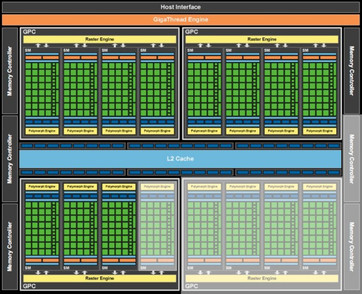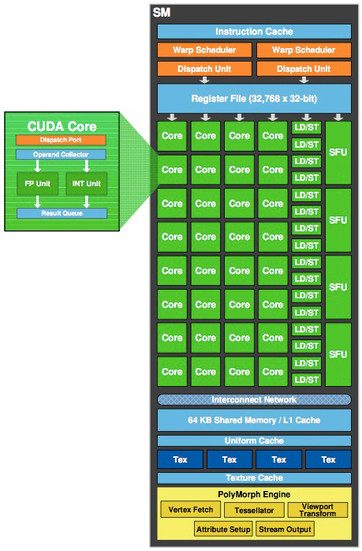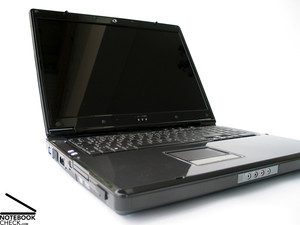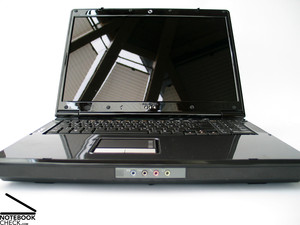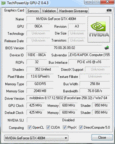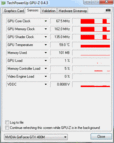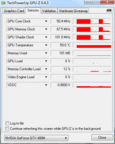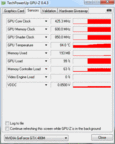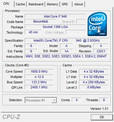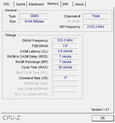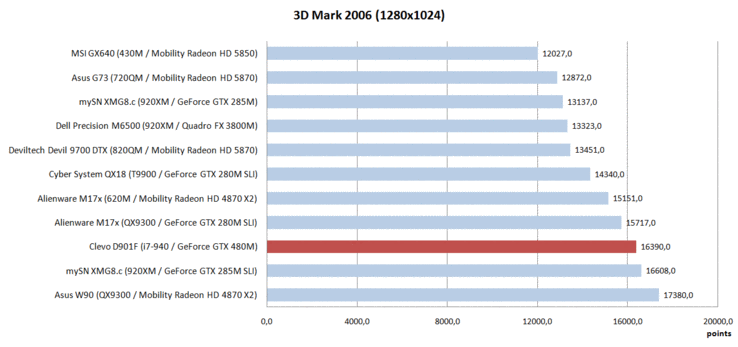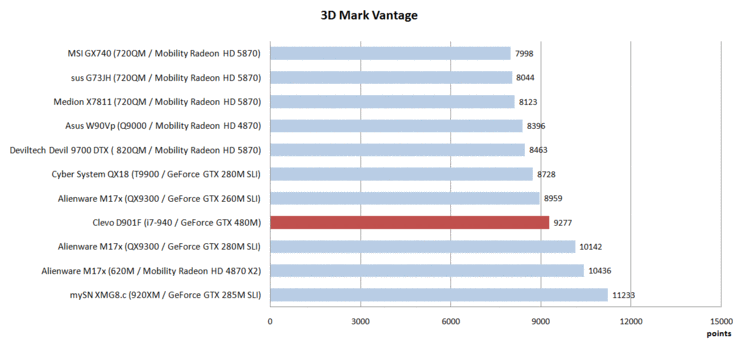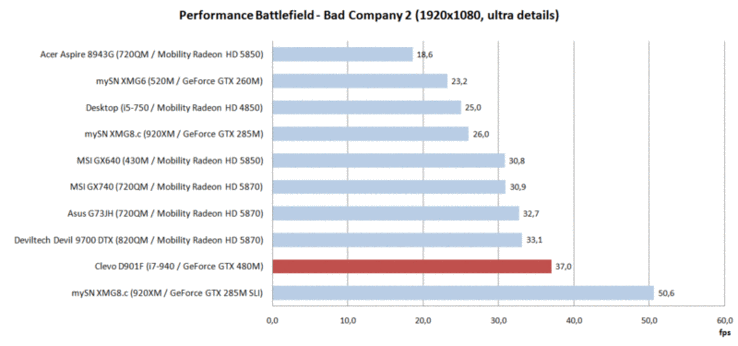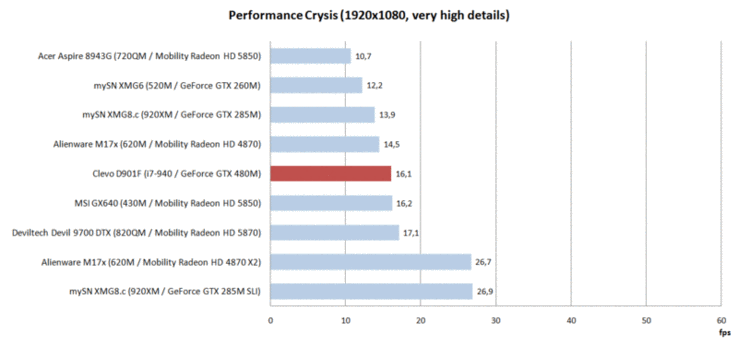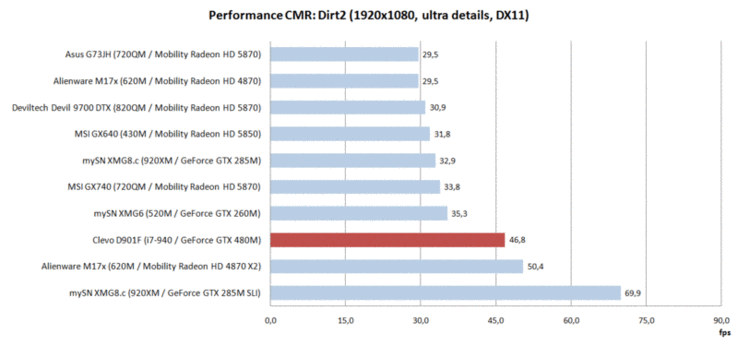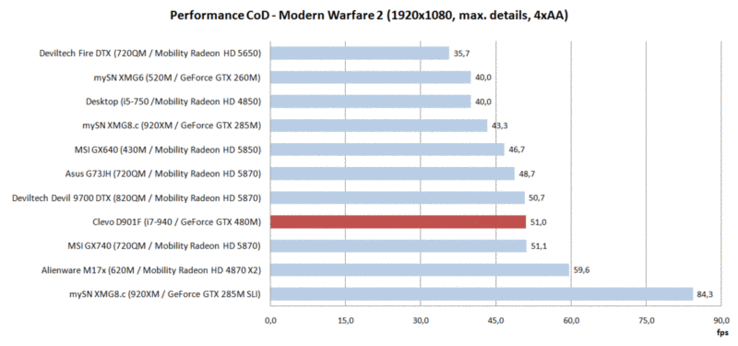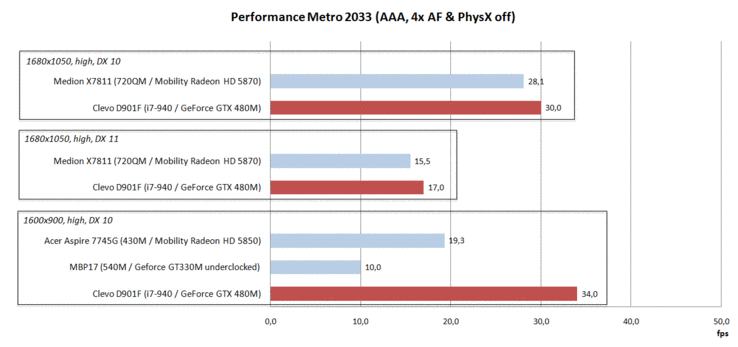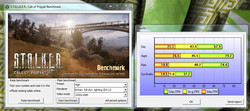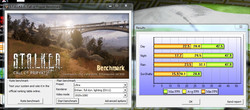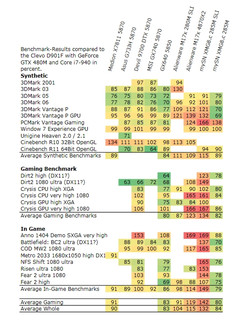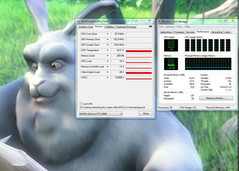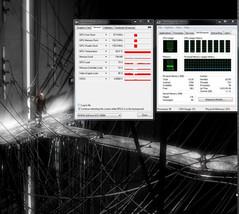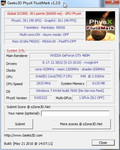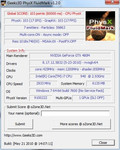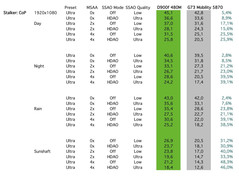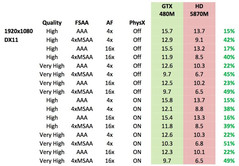Review Nvidia GeForce GTX 480M "Fermi" - first benchmarks
Nvidia's biggest or more or less only competitor, ATI, already layed the foundation for a new generation of graphics cards with their Mobility Radeon HD 5000 series in the beginning of this year. The most known innovation is the support of DirectX 11. The new graphics cards took a top position in the mid-range GPUs' ranking (HD 5650) and they also had a powerful candidate, the HD5870, in the top-range, which beat some records.
On the contrary, Nvidia sticked to DirectX 10 and tried to score points with its Optimus technology. However, the performance-oriented users of the high-end multimedia and gaming domain were somewhat neglected. These still had to be content with GPUs based on the old G92 architecture.
Again and again rumors abounded that a new innovative chip generation codenamed "Fermi" should scare their competitor AMD again. It took a long time, but now they are out there. We present the first results of our Nvidia Geforce GTX 480M graphics card test.
Technology
The GeForce GTX 480M is based on the GF100 chip (codename "Fermi"), which was developed from scratch. Nvidia generally focused on calculations performed on the graphics card and of course the so-called CUDA cores support all DirectX 11 features.
In theory, the GF100 features 512 cores (1-dimensional) and six 64-Bit GDDR5 memory controller (so a total of 384 Bit). Each of the cores can execute Vertex, Pixel, geometry, and calculations. In addition the GF100 has 48 ROP units for pixel blending, anti aliasing, and atomic memory access.
However, as the power consumption of the full-featured chip would be too high for mobile use, the GTX 480M uses a stripped down version. 352 cores remain activated (5 streaming multi-processors deactivated) and a 256 bit memory bus (2 memory controller deactivated) is used. So, the GTX480M is related to the desktop GTX 465, which is simply driven by higher clock rates.
Detailed information about the GF100 / Fermi architecture is available in the GF100 Whitepaper (PDF).
| Mobility Radeon HD 5870 | GeForce GTX 480M | |
| Chip | RV840 | GF100 |
| Transistors | 1,04 Mrd. | ca. 3 Mrd. |
| Lithography | 40nm | 40nm |
| Reference clock rate | 700 | core 425 MHz/ shader 850 MHz |
| Cores | 800 bzw. 288 (5D) | 352 (1D) |
| ROPs | 16 | 32 |
| TMUs | 40 | 44 |
| TAUs | 40 | 44 |
| Memory interface | 128 Bit | 256 Bit |
The test system
We used a Clevo D901F Barebone for our first tests. Apart from the GTX 480M from Nvidia it was equipped with an Intel Core i7-940 CPU, which is actually a desktop processor. So, the results of benchmarks influenced by the CPU might be lower if combined with a mobile notebook processor. Furthermore, 6 GB RAM are built-in and two 2.5" hard drives in a RAID 0 array (+ one HDD for data) provide for the necessary hard drive performance.
Generic Benchmarks
Before we focus on the gaming-tests, we take a look at the most popular generic benchmarks.
3D Mark 2006
Even if it is already some years old, the 3DM06 is still a compulsory for every graphics solution. Indeed, the result of the test system is impressing. The combination of i7 / GTX 480M achieves 16390 Punkten and ranks in between gaming bolides with dual graphics solutions.
The Deviltech 9700 DTX with 820QM CPU and ATI Mobility HD5870 GPU used to have the best result of all single-chip graphics solution in our database: 13451 points. Therewith it is clearly slower (-20%). The GTX 285M SLI in the XMG8.c is on a par.
3D Mark Vantage
Because the 3DMark06 is know to be slightly CPU-dependent, we now look at the current 3D Mark Vantage benchmark, which further reduces the impact of the CPU and poses an adequate challenge for GPUs.
The test records 9277 points for our test system. Again the GTX 480M reaches the level of SLI and Crossfire X2 graphics solutions. The fast follower in the single-GPU ranking has 8463 points and falls about 10% behind the Fermi. Unsurprisingly, it is the ATI Mobility Radeon HD 5870 in the Devil 9700 DTX notebook.
Gaming Performance
Battlefield - Bad Company 2
Because it is one of the most popular multi-player-games, BC2 is a compulsory of our GTX 480M test. Compared to other powerful system with single-chip graphic card the Clevo D901F is on top. It is about 10% faster than the most powerful graphics card from ATI, the H5870, in different gaming laptops.
Compared to the up to now most powerful graphics card from Nvidia, the Geforce GTX 285M in the XMG8.c from Schenker, the performance gain is even more impressive. It is 42% faster in comparison.
However, the performance of dual-graphics solution, two GTX 285M graphics chips with equally fast CPU in the mySN XMG8.c stays clearly out of reach, with about 38% better performance.
On the one hand our test sample achieved 37fps at highest possible settings and the game was playable without studdering, but, considering BC2 is an online shooter, the frame rate dropped below 30 fps too often.
| Battlefield: Bad Company 2 | |||
| Resolution | Settings | Value | |
| 1920x1080 | high, HBAO on, 4xAA, 8xAF | 37 fps | |
| 1366x768 | high, HBAO on, 1xAA, 4xAF | 70 fps | |
| 1366x768 | medium, HBAO off, 1xAA, 1xAF | 97 fps | |
| 1024x768 | low, HBAO off, 1xAA, 1xAF | 108 fps | |
Crysis
The shooter Crysis is an established game in our benchmark suite. Since its launch, it is one of the most demanding software in performance ratings. This is reflected by the results, which are throughout in the unplayable range at highest graphic details (1920x1080 Pixel, very high details).
Our test system with GTX 480M graphics achieves 16.1 frames/second at these settings in the game's integrated GPU-test. Therefore, the system is on par with or slightly slower than the systems with ATI Mobility Radeon HD 5870 graphics solution we used for comparison. While it is about 15% faster than the GTX 285M in the mySN XMG8.c the Devil DTX with HD 5870 GPU ranks just under 6% better than the Clevo D901F with GTX 480M graphics card.
Again, SLI (Nvidia) or Crossfire (ATI) graphics solution are clearly better. The HD 4870 X2 and the GTX 285M SLI outperform single chip GPUs by about 57%.
| Crysis - GPU Benchmark | |||
| Resolution | Settings | Value | |
| 1920x1080 | Very High, 0xAA, 0xAF | 16.1 fps | |
| 1024x768 | High | 62.3 fps | |
Colin McRae: Dirt 2
Besides of its genre, the race simulation Dirt 2 especially differs from other games, because of its DirectX11 support. Among all compared notebooks only such with an compatible GPU (ATI 5xxx Serie, GTX 480M) support this feature.
The recorded result is very positive for the GTX 480M GPU. The new flagship from Nvidia achieves 46.8 fps at a resolution of 1920x1080 pixel and ultra details in the game's integrated benchmark and can clearly outperform its competitors from ATI and its predecessor, the GTX 285M.
The best result of the HD 5870, recorded for the MSI GX740 is 33.8 fps and about 30% below the result of the GTX 480M. The GTX 285M in the mySN XMG8.c is beaten on a similar level.
Once again dual GPU solution are top, e.g., the HD 4870 X2 in the Alienware M17x (+8%) or the GTX 285M SLI in the XMG8.c (+50%), but none of these supports DX11.
| Colin McRae: DIRT 2 | |||
| Resolution | Settings | Value | |
| 1920x1080 | Ultra Preset, 4xAA | 46.8 fps | |
| 1360x768 | High Preset, 2xAA | 84.4 fps | |
| 1024x768 | Medium Preset, 0xAA | 130.5 fps | |
| 800x600 | Low Preset, 0xAA | 176.5 fps | |
Call of Duty - Modern Warefare 2
Apart from Battlefield, of course also its counterpart of the Call of Duty series belongs to the compulsories: Modern Warfare 2. Our previous tests indicate that MW2 is slightly less demanding.
This could explain the results of the GTX 480M, which can not really beat the ATI Mobility Radeon HD 5870. Our test configuration achieved 51 fps and therewith a result that is nearly identical to the one of the HD 5870 in the MSI GT740. Therewith, the game is playable without problems.
However, the best result for the GTX 285M in our database, recorded for the XMG8.c, can be exceeded. It is about 15% slower than the Fermi. Again the HD4870 X2 in the Alienware M17x or the GTX 285M SLI in the XMG8.c is out of reach.
| CoD Modern Warfare 2 | |||
| Resolution | Settings | Value | |
| 1920x1080 | all on/max vsync off, textures extra, 4xAA | 51 fps | |
| 1366x768 | all on/high vsync off, high textures, 4xAA | 68 fps | |
Metro 2033
Metro 2033 is the youngest game in test. Unfortunately, we, therefore, do not have many records for our comparison. Nevertheless, a first classification of the GTX 480M should be possible.
Already the first test proves that Metro demands even more performance than the games mentioned above. It is just below playable for the D901F with Fermi at a resolution of 1600x900 Pixel, high details, and DX10 features.
Its toughest competitor from ATI, the Radeon HD 5870 cannot do better, as a comparison with the Medion X7811 laptop proves. It ranks slightly below the GTX 480M from Nvidia in the D901F (+6%) at a resolution of 1680x1050 pixel, high details, and DX10.
As soon as DX11 is activated, both graphics cards give in. Although the absolute difference is smaller, the performance gain from HD 5870 to GTX 480M increases to 9%.
| Metro 2033 | |||
| Resolution | Settings | Value | |
| 1920x1080 | Very High DX11, AAA, 4xAF | 12 fps | |
| 1600x900 | High DX10, AAA, 4xAF | 34 fps | |
| 1360x768 | Normal DX10, AAA, 4xAF | 69 fps | |
| 800x600 | Low DX9, AAA, 4xAF | 126 fps | |
Unigine Heaven-Demo 2.0
Finally, we rate the DirectX 11 performance with the help of two benchmarks. First of all we compare the test system to the Asus G73JH (ATI HD 5870 GPU and Core i7-720QM CPU) on the basis of the new DirectX 11 benchmark "Unigine Heaven".
This test extensively uses the DX11-feature tessellation and might hint on future demands of computer games.
The result is unambiguous. Both graphics cards reach their limit in regards of smooth playability at the selected settings (tessellation: normal | high details | all on | VSync, AA and AF off), but, the GTX 480M from Nvidia clearly outperformed the HD 5870 in the Asus GX73JH by 30%.
Raising the tessllation setting to "extreme", the result of the GTX 480M falls to 24.3 fps. This is the level of the ATI Mobility Radeon HD 5870 recorded at tessellation level "normal".
Stone Giant Benchmark
The tessellation performance of the GF100 also gets apparent in the Stone Giant DX11 benchmark. Our test system can achieve 37 fps at 1680x1050 and high tessellation settings. This equates the Desktop HD 5830-5870 (see Overclocking.net) and is clearly better than mobile AMD graphics cards.
Stalker: Call of Pripyat
We use the free benchmark in order to check the performance in the DirectX 11 shooter. The GTX 480M achieved an average of 43.9 frames per second at 1920x1080 Pixel, preset: high, EFDL DX11. Because we did not run this benchmark on a test system with HD 5870 so far, we fall back on the records of our colleagues from Notebookjournal.de. According to them the 5870 achieves, depending on the notebook (all equipped with mobile CPUs) between 49 and 53 fps. Apparently, the Mobility 5870 is 16% better here.
Nvidia also published benchmark results of Stalker. They were recorded at "ultra" details and the GTX480M is about 20-30% faster than the HD 5870. Details are available in the appendix of this article.
So it looks like the GTX 480M wins in the highest settings and the HD 5870 is a bit faster with less demanding details.
Further game tests
We also conducted some tests with the Resident Evil 5 benchmark. Because we do not have records for the HD 5870, we use those from a test of the Asus G73Jh from Legitreviews. The GTX 480M achieved 67.4 fps at 1920x1080 without AA and Motion Blur (in contrast to the data in the table) in our test. The HD 5870 is with 58.3 fps 14% slower. At 1280x720 the difference increases to 20% (98.3 fps versus 78.8 fps). However, the powerful Desktop CPU in the D901F has a bigger impact with low details.
In the overview of all tested games it gets apparent that the GTX 480M is unable to smoothly run Metro 2033 and Crysis at highest details fluently. All other games ran smoothly and playable at highest settings and resolutions in our test.
| low | med. | high | ultra | |
| Quake 3 Arena - Timedemo (1999) | 720 | |||
| Doom 3 (2004) | 310 | 290 | ||
| Counter-Strike Source (2004) | 191 | |||
| Quake 4 (2005) | 62 | |||
| Half Life 2 - Lost Coast Benchmark (2005) | 234 | |||
| World in Conflict - Benchmark (2007) | 84 | 35 | ||
| Crysis - GPU Benchmark (2007) | 62.3 | 16.1 | ||
| Crysis - CPU Benchmark (2007) | 58.3 | 15.5 | ||
| Supreme Commander - FA Bench (2007) | 52.4 | 45.1 | ||
| Call of Duty 4 - Modern Warfare (2007) | 93 | |||
| Trackmania Nations Forever (2008) | 52.8 | |||
| Crysis Warhead (2008) | 98 | 34 | ||
| Far Cry 2 (2008) | 174 | 106 | 45.4 | |
| Left 4 Dead (2008) | 142 | |||
| GTA IV - Grand Theft Auto (2008) | 53.9 | |||
| F.E.A.R. 2 (2009) | 119 | 61 | ||
| Sims 3 (2009) | 105 | |||
| Anno 1404 (2009) | 170 | 53 | ||
| Colin McRae: DIRT 2 (2009) | 176.5 | 130.5 | 84.4 | 46.8 |
| Need for Speed Shift (2009) | 84 | 51 | ||
| Resident Evil 5 (2009) | 150.5 | 96.3 | 59.7 | |
| Risen (2009) | 38 | |||
| CoD Modern Warfare 2 (2009) | 68 | 51 | ||
| Battlefield: Bad Company 2 (2010) | 108 | 97 | 70 | 37 |
| Metro 2033 (2010) | 126 | 69 | 34 | 12 |
Performance Verdict
Let's finally look at all executed benchmarks in comparison (excluding the results from external sources). In the synthetic benchmarks the GeForce GTX 480M can outperform the Mobility Radeon HD 5870 by 11%. If we just consider the significant benchmarks (no old 3DMark version, no OpenGL tests, which heavily depend on the driver version), the performance gain increases to 15%. The advantage in Unigine Heaven, which stems from the high tessellation performances, is particularly impressive.
The old GeForce GTX 285M is also about 11% slower (whereby the excellent PCMark Vantage GPU Score somewhat fudges the average). The SLI (280M and 285M SLI) and the Crossfire (4870 CF) graphics solutions stay 9% to 15% percent ahead of the 480M.
In the gaming benchmarks the HD 5870 is with 9% a little less slower. The GTX 480M is in all games apart from Crysis (only at very high) and Anno 1404 faster. A single GeForce GTX 285M is even more considerably slower (-20%) here. However, the SLI and Crossfire combinations stay out of reach and even gain advantage.
Video acceleration
Alike the other 40nm lithography NVIDIA chips before Fermi, the GF100 features PureVideo HD by means of a fourth generation video decoder (VP4) and VDPAU Feature Set C. Therewith, the graphics card can completely decode HD Videos in H.254, VC-1, MPEG-2, and MPEG-4 ASP without processor load (including 2 streams in parallel for PIP). In our test the D901F could play H.264 (Big Buck Bunny) and VC1 (Elephants Dream) at 1920x1080 without jerking and while the CPU load remained low. According to GPU-Z the video engine of the graphics card reached a load of about 50%.
The current release of Flash 10.1 also supports decoding of HD Videos with GeForce GTX 480M. Although the CPU load was higher compared to local videos, a Youtube Trailer run smoothly without frame drops at 1080p.
CUDA, DirectCompute, OpenCL & PhysX
Of course, the newest GeForce generation also generally supports executing calculations on the graphics chip. It is possible to use the cores via CUDA, DirectCompute, or OpenCL. However, existing programs are said to not fully utilize the improved architecture, because they are optimized for older generations. In practice, the user will mainly find software for faster video decoding (z.B. Badaboom or Powerdirector).
A feature only supported by Nvidia is the calculation of PhysX effects by the graphics card. Of course also Fermi, the new flagship, can do this. In Batman: Arkham Asylum, Mirrors Edge or the upcoming Mafia 2 more beautiful effects are possible (without GPU support they do not run smoothly for the most part).
To assess the performance of PhysX with the GTX480M we used the FluidMark benchmark. It reached a 3-fold better result, when PhysX calculations were done by the GTX 480M (17 versus 49 fps) instead of the fast desktop CPU. For comparison, a GeForce GTX 280M achieved about 31 fps and therewith 184 points (27% less) according to an online entry at ozone3d.net.
Power consumption
The whole MXM board, including memory, of the GeForce GTX 480M has a TDP of 100 Watt. This is a new level for single GPU mobile graphics cards. So far, about 75 Watt were typical in the high end range (e.g., Geforce GTX 285M). This is not only caused by the energy demanding Fermi chip, but also by the 2 GB GDDR5 video memory. The graphics memory alone presumably needs 10-15 Watt more than 1 GB DDR3 - GDDR5 RAM. But, the TDP of the GTX 480M is still clearly lower than of SLI or Crossfire graphics solutions, which require 2x75 Watt. Beware, the TDP values of ATI cards usually does not include the whole MXM board, but the chip itself only. Therefore, the power consumption is not easily compareable.
The power consumption of the Clevo D901F barebone ranged from 70 to 318 Watt in our test. The powerful Desktop CPU Core i7-940, which has a TDP of 130 Watt, also accounts for this. Nevertheless, the D901F is still on par with the Clevo X8100 (285M SLI, Core i7-920XM) or the Asus W90VP (HD 4870 CF, Q9000), both with mobile CPUs (55W bzw. 35W TDP) without load.
During games we measured a power consumption of 180-190 Watt (COD 6), which is marginally better than SLI and CF configurations. The measured maximum of 318 Watt mainly stems from the desktop CPU, which needs 165 Watt more when running Prime95 than idle.
Of course also the power consumption of the GeForce GTX 480M is interesting. It can clock down to very low clock rates of 50 MHz core / 67 MHz shader / 100 MHz memory. At maximum clock rate, but, without load, we recorded about 21-23 Watt more than with the slowest clock rates. Load further increases the energy demand by 20-42 Watt. So, the laptop needs about 130 Watt if only the graphics card is loaded (Nvidia Island Demo).
Compared to laptops with HD 5870 the D901F has a clear disadvantage. The desktop components, two hard drives and Fermi take their toll. Idle it needs about 20 Watt more (e.g., compared to the Devil 9700 DTX) and about 60 Watt under typical game load.
| Off / Standby | |
| Idle | |
| Load |
|
Verdict
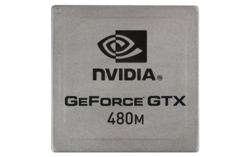
In all of our tests, the Nvidia Geforce GTX 480M is about 10% faster than the so far fastest graphics solution from ATI, the Mobility Radeon HD 5870. So, the flagship from Nvidia wins the title "fastest notebook graphics card". Still you have to bear in mind, that our review sample was equipped with a fast desktop CPU, but we tried to minimize the CPU influence by benchmarking in high resolution and detail settings. As so often, the performance gain depends on the application/game. The GF100 chip can especially demonstrate its strength in new DirectX 11 games and tests and proves to be clearly better. Up-to-date SLI and Crossfire configurations are faster on average, but, consume more energy and suffer from micro stuttering at 30fps. To beat these cards, a GTX 480M SLI configuration is said to be used in an upcoming Clevo Barebone.
The high energy demand of 100 Watt TDP does not mind in the D901F, but, does not allow a use in smaller laptops. So, we have to wait for a smaller Fermi version (GF104), which can also be used in smaller and more affordable notebooks. These should also work more power efficient than the basic GF100 chip.
The biggest disadvantage is the high price, which Nvidia charges for its new top model. Still, you always have to pay a high price to get the fastest hardware on the market.
The recorded results compared to other graphics chips are also available in our article Computer Games on Laptop Graphics Card or in our Comparison of Graphics Cards.
Appendix: Benchmarks von Nvidia
In addition to our benchmarks, Nvidia published some (selected) benchmarks, which we do not want to keep back from you. In these games / settings the GeForce GTX 480M can very clearly outperform the Mobility Radeon HD 5870. They also used a Clevo D900f barebone, but, with slightly weaker components. (Core i7 920, 4 GB DDR3, 320GB 5400 HDD, driver 257.07) and compared to an Asus G73 (Core i7-720QM, 8 GB RAM, 1 TB 7200 HDD, HD5870 1 GB GDDR5, Catalyst 10.4).


 Deutsch
Deutsch English
English Español
Español Français
Français Italiano
Italiano Nederlands
Nederlands Polski
Polski Português
Português Русский
Русский Türkçe
Türkçe Svenska
Svenska Chinese
Chinese Magyar
Magyar
